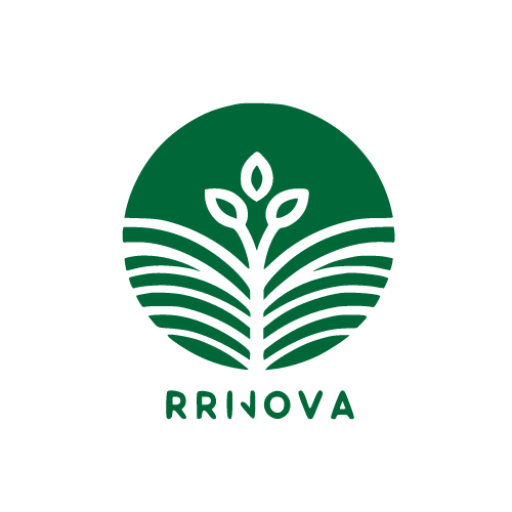
- Case Studies
Case Study: Poland’s Rule-of-Law Reset, Refugee Integration, and EU Funds (2020s–2025)

Historical context (pre-2020 → early 2022)
From 2015 onward, judicial reforms in Poland triggered EU infringement actions and landmark Court of Justice rulings over judicial independence. Financial pressure mounted via daily fines and the freezing of large EU envelopes (RRF and cohesion), framing a multi-year rule-of-law standoff before Russia’s 2022 invasion re-ordered regional priorities. (curia.europa.eu)
Major developments (early 2020s → Nov 2025)
Political turn & funds thaw (2023–2024): After the 15 Oct 2023 election, a pro-EU coalition led by Donald Tusk took office in Dec 2023 and moved to address EU rule-of-law “milestones.” On 28 Feb 2024 the European Commission adopted legal acts unlocking access to up to €137 bn (RRF + cohesion) for Poland; first RRF disbursements followed in 2024. (Wikipedia)
Refugees from Ukraine (since 2022): Poland became the EU’s main front-line host. As of Feb 2025, ~998,000 refugees from Ukraine were recorded in Poland; EU-wide temporary protection remains in force and the Commission proposed extending it to March 2027. Integration advanced but with gaps in schooling and services. (UNHCR)
Socio-economic effects: UNHCR’s 2025 assessment estimates refugees contributed a net +2.7% to Poland’s 2024 GDP, helped by rapid labour-market access (employment rates rose from 61%→69% year-over-year among refugees). Inflation, which peaked in 2023, fell sharply in 2024 but remains sensitive to energy-administered prices into 2025. (UNHCR Data Portal)
Politics in 2025: In June 2025, Karol Nawrocki won the presidency (sworn in 6 Aug 2025). Analysts expect more vetoes and gridlock between the presidency and the Tusk government, with possible consequences for justice reforms and refugee policy. (Reuters)
Key stakeholders
National institutions: Prime Minister and coalition parties; President (veto/pardon powers); Ministry of Justice; Parliament; Supreme Court and National Council of the Judiciary (NCJ). (European Commission)
EU level: European Commission (RRF milestones, conditionality), Council/Parliament; Court of Justice of the EU. (European Commission)
International & civic actors: UNHCR and NGOs on reception/integration; local governments (education, housing); business groups and unions facing labour/price pressures. (UNHCR)
Policy responses (national & EU)
Rule of law & financing
EU conditionality: Release of funds tied to judicial-independence milestones; separate CJEU litigation over fines continued into 2025 (General Court dismissed Poland’s complaints over ~€320 m in earlier penalties).
Government reforms (2024–2025): Drafts to restructure the NCJ/Constitutional Tribunal advanced but faced constitutional scrutiny and presidential politics; the Commission’s 2025 Rule-of-Law Report flagged serious, still-pending concerns—legislative revisions are in preparation.
Refugees & social policy
EU framework: Temporary Protection Directive sustained, with a proposed extension to 2027 and additional funding.
National measures: Open labour-market access, PESEL registration, cash assistance with partners; persistent bottlenecks in school enrolment (esp. secondary) and in sustaining benefits amid shifting politics and public opinion.
Critical assessment
What worked
Conditionality as leverage: The EU’s milestone-based approach proved effective in reopening a path to €137 bn, aligning financial incentives with governance reforms while keeping dialogue open.
Rapid inclusion of refugees into work: Early work-rights and administrative access boosted employment and macro output (+2.7% to 2024 GDP), mitigating labour shortages and supporting fiscal receipts.
Macro stabilization: Inflation decelerated steeply through 2024; risks remain but are better anchored than during the 2022–23 energy shock. (Trading Economics)
Where gaps persist / risks
Judicial reform durability: Key constitutional questions and institutional appointments are unresolved; 2025 cohabitation (President vs. government) heightens veto risk and legal uncertainty that can stall milestones and funding tranches.
Integration quality: School enrolment of refugee children remains uneven (especially secondary); local-level capacity for language support, special needs, and housing is stretched. Public support has softened since 2022, complicating stable benefit design.
Litigation overhang: While some fines are settled, continued court actions and potential non-compliance episodes could revive budget offsets or delays.
Broader implications for Europe
Precedent on funding-governance linkage: Poland illustrates that large-scale EU funding can be a credible lever to uphold common values without immediate economic dislocation—if milestones are concrete and verifiable.
Refugee integration as economic policy: Swift labour-market access and targeted supports can yield macro gains, countering narratives of pure fiscal burden; the challenge is sustaining social consent over multiple years.
Cohabitation risk: National political splits can slow EU-aligned reforms even when a pro-EU government is in office—relevant for other member states facing divided executives.
Recommendations
Lock in rule-of-law milestones with cross-veto safeguards
Convert key justice reforms (NCJ appointments, disciplinary regime, Constitutional Tribunal fixes) into consensus-oriented packages with phased entry and supermajority elements where feasible. Tie domestic timelines to specific RRF tranche conditions to preserve momentum despite cohabitation.Ring-fence local integration capacity
Use RRF/cohesion funds to expand language assistants, remedial classes, and counsellors in municipalities with high refugee density; benchmark enrolment and learning outcomes each semester. Evidence from UNHCR shows labour participation responds quickly to administrative facilitation—apply the same discipline to education outcomes.Stabilize support with work-linked incentives
Maintain a work-first safety net (child benefits, rent top-ups) tapering with verified employment and schooling, rather than abrupt expiries that risk homelessness or dropout—and that can fuel backlash. Align with the EU proposal to extend temporary protection to 2027, paired with pathways to longer-term status for high-participation households. (The Guardian)Transparency and communication
Publish a quarterly Rule-of-Law & RRF dashboard detailing milestones met, funds disbursed, and justice-system performance indicators (discipline cases, vacancy backlogs). Publicly tracking progress reduces space for disinformation and helps markets price political risk.Contingency for political gridlock
Where presidential vetoes are likely, prioritize non-legislative instruments (ministerial regulations, administrative orders, EU-implementing decisions) that still advance milestones, while preparing narrow, veto-proof compromises for core statutes.
Sources (selected)
European Commission press release (Feb 28, 2024): Unlocks access to up to €137 bn in funding for Poland (RRF + cohesion).
Poland’s RRF country page (EC): Plan content, milestones, financing. (European Commission)
EU Rule of Law Report 2025 – Poland (EC): Status of judicial reforms; pending concerns. (European Commission)
CJEU/General Court & Reuters (Feb 2025): Court dismisses Poland’s complaints over EU fines. (Reuters)
UNHCR Poland factsheet (Feb 2025): ~998k refugees from Ukraine recorded. (UNHCR)
UNHCR economic impact study (June 2025): +2.7% GDP effect from refugee inclusion in 2024; rising employment rates. (UNHCR Data Portal)
Eurostat/EC (Oct 2025): Proposal to extend temporary protection to March 2027. (European Commission)
Context on 2021 Belarus border crisis: Hybrid-pressure background to Poland’s migration stance. (Wikipedia)
2025 presidency: Nawrocki’s election and inauguration (newswire + official). (Reuters)
Related Posts
Your Partner in Real Innovation
We design and develop pioneering projects, conduct meaningful research, and build products that shape the future.


